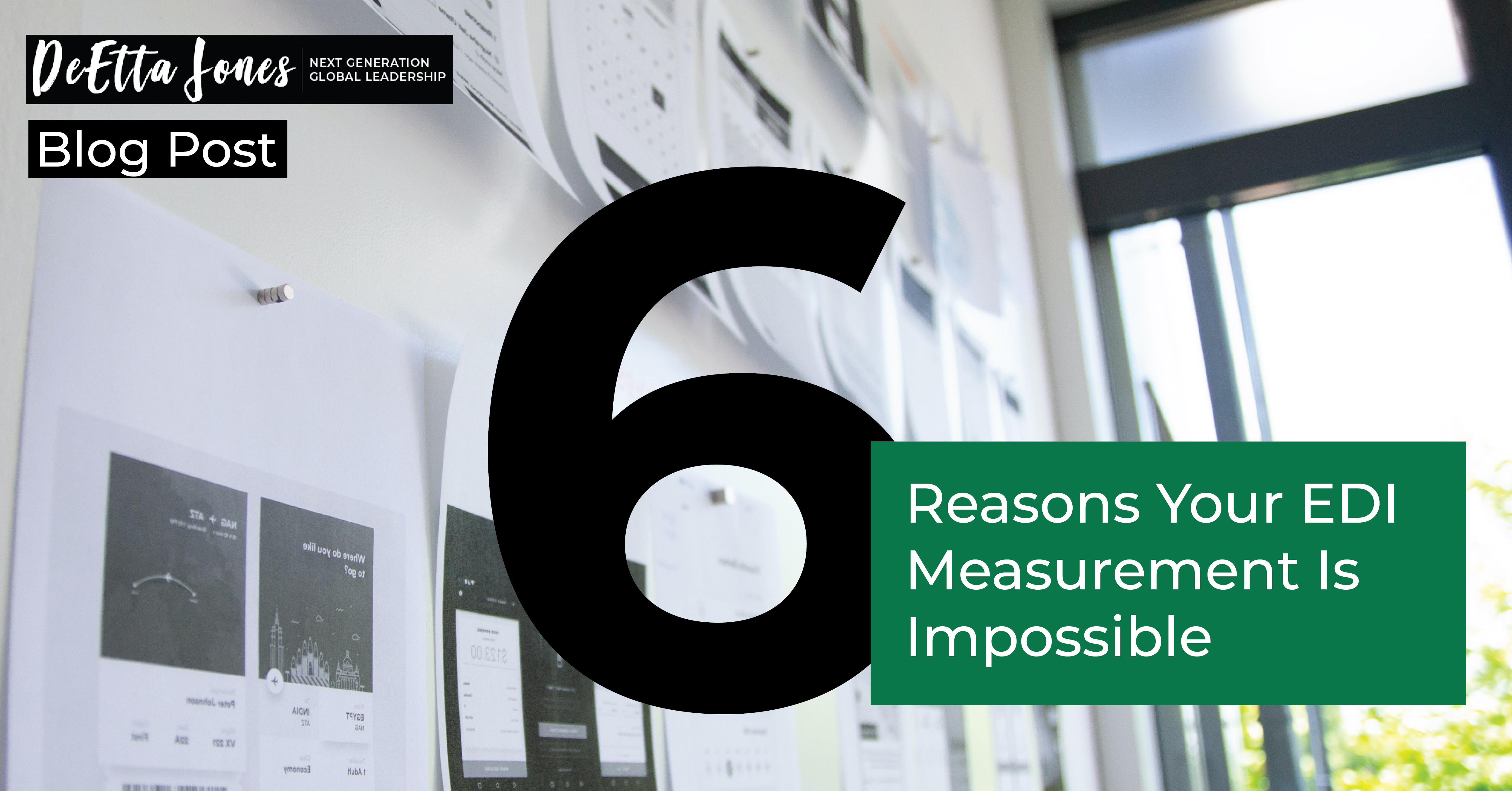The spotlight that EDI has received at this year’s World Economic Forum in Davos reinforces something many of us already know: it is a priority issue that is top of mind for leaders across industries and the globe. Consistently highlighted is the need for investing and acting beyond surface-level programming–beginning with a “nuanced understanding of root causes”, according to the Lighthouse Report.
While I do not purport to have all of the answers, I believe that we need to transform:
- what we measure
- how we measure
- who is involved
- in what ways and
- at what stages with measurement
These steps reflect the philosophical and practical shifts needed to get to a place of real impact. EDI should be pursued as part of a larger agenda, with measurement being informed by internal organizational needs and a broader array of opportunities to impact societal and environmental issues. In the absence of significant intervention and redirection, these 6 measurement practices are likely more familiar:
- You are checking boxes. You are measuring how many people attend EDI events or how many EDI events are being held, not whether or not the events are aligned with overarching organizational goals.
- You are focused on headcount. Last year you may have had a few recruitment wins, but the next year lost a number of your most visible employees of color. Year over year recruitment is perpetually balanced by retention. This doesn’t change very much for most organizations in the absence of significant strategic intervention.
- You have a number of EDI initiatives and are measuring them each separately, and using different scales. Recruitment, workforce development, managerial training, supplier diversity, organizational culture, IT systems, advancement, market share, brand and reputation, and community engagement might all be being pursued in your organization at any one time. However, unless they are coordinated and aligned to one overarching strategy they are likely using funds inefficiently, comparing apples to oranges, and only resulting in small wins.
- You are measuring EDI in isolation from other business drivers. This is like going to a knee doctor to get recommendations about how to make your knee stronger, without also investing in the surrounding joints or muscles. EDI is not a silo within your organization; it is part of an interconnected system.
- You are ostracizing your constituents; asking people in “target communities” to supply data, rather than being part of the process from the beginning. The whole world is pushing for equity, for new ways of engaging that decolonize data, and the data gathering and reporting processes. Surfacing and disrupting mental models that continue to benefit the existing power structures are necessary, beginning with those who have and hold the most power.
- You are measuring in a vacuum. You are holding your data, strategies and even struggles too close to your vest, treating EDI as another proprietary undertaking. The next generation of EDI will require cross-organization, cross-industry and global collaboration that transform systems in organizations and communities at every level.
EDI is evolving (thankfully!) and we are all in uncharted waters. So rather than feel overwhelmed by the desire to get it all “right”, focus first on what you can do. Right now, and beginning with yourself.
First know thyself.
There is so much to be done regarding measurement. A solid starting point is to begin with self-assessment. Check out the DJA EDI Dimensions Assessment™ which equips you with awareness, knowledge and skills that exemplify EDI contemporary best practices. The process of completing the assessment provides guidance on a full spectrum of ways in which an individual can invest in themselves and positively impact their relationships and organization. This developmental experience is an easily accessible and practical way to begin pursuing a meaningful path forward–your personal EDI journey.
The Next Step on Your EDI Journey
The EDI Journey™ is the path that we travel over the course of our lives, careers and relationships, including with self. Each person’s journey is unique; impacted by core dimensions of your identity and allowing for individualized experiences and choices.
To bring the characteristics of an equity-rich future into focus for practical use we designed a path, The EDI Journey™. The EDI Journey™ is based on rigorous research covering the literature from interculturalism and power dynamics to efficacy and change management. It describes 5 stages through which individuals and organizations progress on the path to full EDI transformation. Results are based on the assumption that the path to EDI transformation is not purely linear and sequential. Instead, the pursuit of goals in all 5 stages may require ongoing investment, with progress able to be regularly measured and communicated.
Don’t be disheartened with what hasn’t happened yet, or what feels like an uphill climb. Every step we take in the direction of distributing equity is energy well spent. We not only serve our own best interest, we are manifesting what we want to bring forward in the world. As always, DJA is here to support you on your journey. Contact us to access the EDI Dimensions Assessment or other consulting services that will help you move forward, toward more meaningful progress and measurement.
Always becoming,
-DeEtta
Learn more about our EDI in Action Series that can help you grow your organization's EDI efforts, extend the EDI conversation more broadly within your organization and establish a base of EDI knowledge and shared language across all of your employee groups.

